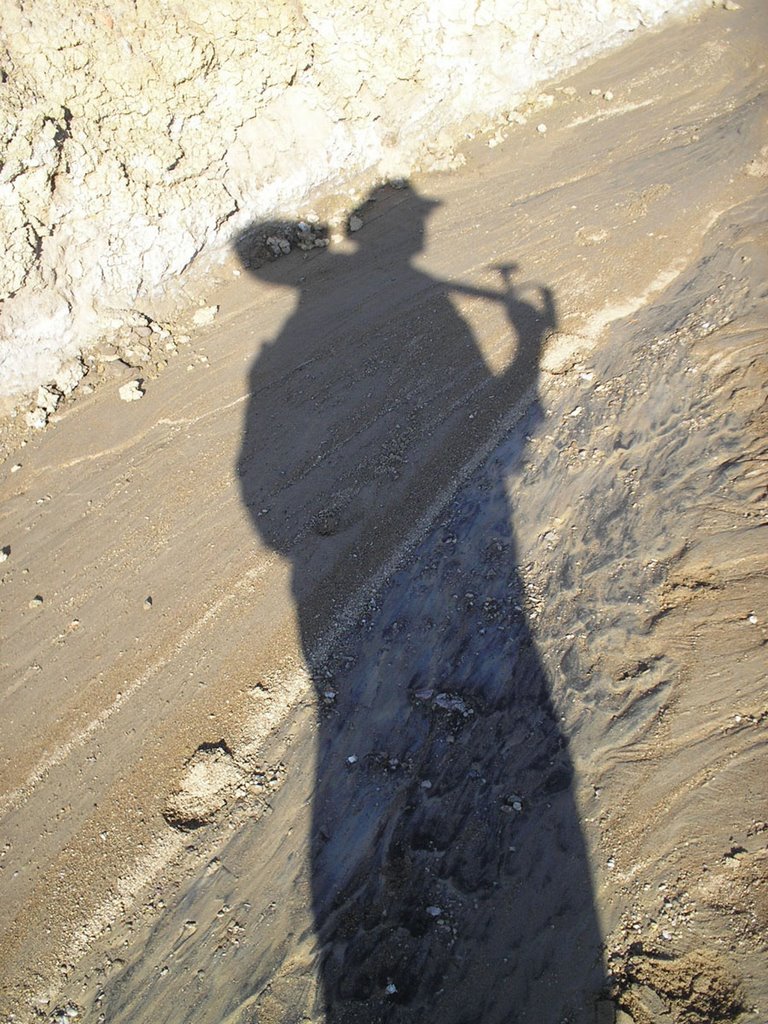Bird parts
In my day job I work on pneumatic (air-filled) bones in dinosaurs and birds. Here are some cool examples.

A beak of a toucan, cut away to show the core of "bone foam". This specimen and the next two are on display at the Natural History Museum in London.

The skull of this rhinoceros hornbill shows a nice separation between functional parts. The beak has to resist forces and so it is filled with struts of bone, like the rest of the highly pneumatized skull. The "horn" is just for show and has little internal reinforcement. It would be interesting to know if the bony wall of the horn is thicker in the unreinforced part--anyone out there have any data on this?

Here's a similar shot for the helmeted hornbill. Males of this species butt heads in midair, and consequently the crest is strongly reinforced. The reinforcing struts converge toward the top of the braincase, which is missing. Compare this photo to the one previous and you'll see where the braincase ought to be, in the semicircular hollow on the right.

Finally, my specialty: some vertebrae. An ostrich neck, in this case. Like birds, we have some air-filled skull bones--our sinuses (ours are not nearly as lightly built as those of birds). But only birds, dinosaurs, and pterosaurs have pneumatic bones in the rest of their skeletons. The bones are pneumatized by diverticula, blind-ended tubes, that develop from the lungs and air sacs.

A 3D model of a swan vertebra, reconstructed from micro CT slices. A couple of intersecting slices are shown on the left. You can see that the vertebra is mostly air space, with a skin of bone and just a few bony struts inside. Same goes for the vertebrae of many dinosaurs and pterosaurs. I'll post some pix the next time I'm in a photo-blogging mood.

A beak of a toucan, cut away to show the core of "bone foam". This specimen and the next two are on display at the Natural History Museum in London.

The skull of this rhinoceros hornbill shows a nice separation between functional parts. The beak has to resist forces and so it is filled with struts of bone, like the rest of the highly pneumatized skull. The "horn" is just for show and has little internal reinforcement. It would be interesting to know if the bony wall of the horn is thicker in the unreinforced part--anyone out there have any data on this?

Here's a similar shot for the helmeted hornbill. Males of this species butt heads in midair, and consequently the crest is strongly reinforced. The reinforcing struts converge toward the top of the braincase, which is missing. Compare this photo to the one previous and you'll see where the braincase ought to be, in the semicircular hollow on the right.

Finally, my specialty: some vertebrae. An ostrich neck, in this case. Like birds, we have some air-filled skull bones--our sinuses (ours are not nearly as lightly built as those of birds). But only birds, dinosaurs, and pterosaurs have pneumatic bones in the rest of their skeletons. The bones are pneumatized by diverticula, blind-ended tubes, that develop from the lungs and air sacs.

A 3D model of a swan vertebra, reconstructed from micro CT slices. A couple of intersecting slices are shown on the left. You can see that the vertebra is mostly air space, with a skin of bone and just a few bony struts inside. Same goes for the vertebrae of many dinosaurs and pterosaurs. I'll post some pix the next time I'm in a photo-blogging mood.


2 Comments:
Does Jack Horner know about this post? He had a show arguing that Dinosaurs with thickened skulls did not use them for fighting for mates but display like the horn bills. It's interesting that some horn bills use their crest for combat for mates.
I don't know if he knows about the helmeted hornbill or not. I would guess yes, because he knows quite a bit about birds, but OTOH natural history info like that is often oddly unknown.
In any case, the structures in pachycephalosaurs that were thought to be there for resisting stresses from headbutting are actually architectural consequences of how a dome of bone is forced to grow. So they provide no support for the idea that pachys were into head-butting. Also, rounded domes would be hard to line up for a good impact, unlike, say, the broad impact surface formed by the forehead and horns of a bighorn sheep. So far, the head-butting hypothesis for pachycephalosaurs has little support beyond "it woulda been cool."
Post a Comment
<< Home